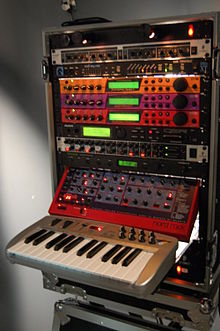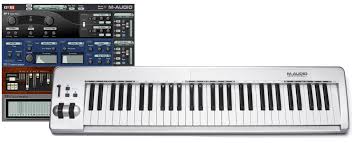UNIT 2 - MIDI BASICS
|
MIDI QUESTIONS TO BE DOWNLOADED AND SUBMITTED
| ||||||
|
Electronic musical instruments offer an incredible array of sounds to professional and amateur musicians. They place at a musician’s fingertips everything from traditional, real-world sounds to noises that have never been heard before.
They come in all shapes and sizes, too, from solid, physical instruments such as keyboards, beat boxes, and electronic drum kits, to computer-based “virtual” instruments, or “soft synths.” All of these devices rely on something called “MIDI.” You really can’t get too far with an electronic instrument without bumping into MIDI. This is actually a good thing, though, since MIDI allows you to do all sorts of exciting musical things. Of course, it helps to know what MIDI is—that’s what this class is for. Once you understand the basics, you can start your own creations and explore the many different ways to use MIDI! MIDI, the Musical Instrument Digital Interface is a protocol developed in 1983 by major synthesizer manufacturers to allow one synth to play another remotely. They tried to figure out a way they could make a second synthesizer play by sending it control data from the first. They figured it out, and more! The developers quickly found out a computer could record and playback 16 channels of this data and it revolutionized the way music is produced. Then they discovered with the right hardware you can have several of these 16 channel bundles (or ports) all running at once. The implications were profound. Now one person could compose multi-part music all by themselves.
|
|
1. WHAT MIDI ALLOWS YOU TO DO
Here are just some of the things MIDI makes possible:
|
MIDI allows multiple instruments to be played from a single controller, which makes stage setups much more portable. This system fits into a single rack case, but prior to the advent of MIDI would have required four separate keyboard instruments, plus outboard mixing and effects
|
|
2. UNDERSTANDING MIDI
What MIDI Is MIDI, which stands for “Musical Instrument Digital Interface,” is a system that allows electronic musical instruments and computers to send instructions to each other. It sounds simple, but MIDI provides some profound creative opportunities. What MIDI Isn’t Yes, it’s an odd place to start, but one of the things that confuses people new to MIDI is that they assume MIDI is some type of sound, or audio, that travels through MIDI cables. It’s not. |
|
3. MIDI vs. DIGITAL AUDIO
4. MIDI CONTROLLERS
A MIDI device that controls another is referred to as a MIDI “controller.” Though most people think of MIDI as being just for keyboard players, a wide range of MIDI controllers and control surfaces make it easy for all sorts of players and engineers to harness the power of MIDI. 5. CHANNELS vs. PORTS
MIDI messages can be defined by a MIDI port and/or a MIDI channel. Each port has 16 different channels that can be used to pass data. MIDI ports are often unique hardware paths, typically indicated by a 5-pin DIN connectors (shown below). MIDI ports can have their own hardware input and output or all ports can be handled by a single USB connection. 6. VIRTUAL INSTRUMENTS
What's a "Virtual Instrument" and Why Do I Need One? MIDI does not pass audio signal, so if you are using a MIDI controller connected to the computer, you will most likely need some sort of software that will interpret the MIDI and produce sound. This is referred to as a Virtual Instrument, VI, or plug-in. If you are using recording/sequencing software, you may already have some virtual instruments included. Virtual instruments can consist of a variety of sounds or can specialize in a particular timbre or category. Whether you're looking for great piano sounds, epic drum kits, or the sounds of crashing dish wear, there is a virtual instrument out there for everyone. 7. SOME ADVANTAGES OF MIDI
|












